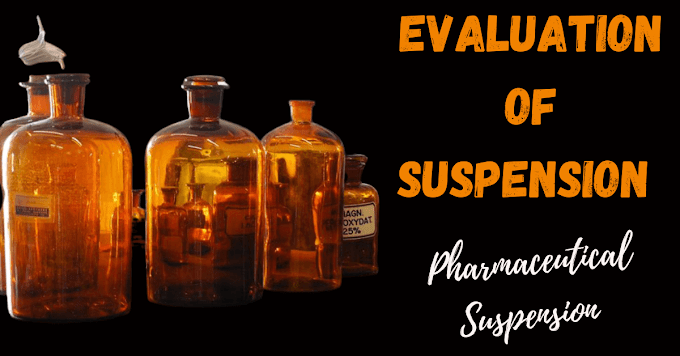Expectorant Drugs
Expectorants are also known as bronchomucotropic agents. These drugs either increase or decrease the respiratory secretions volume or viscosity (or both), making it easier for coughing and ciliary activity to remove them.They are decongestants because they act by liquifying viscous mucus or mucopurulent discharges. As a result, they facilitate the discharge of these fluids and release them when treating coughs.
Agents known as antitussives are those that actively inhibit or reduce coughing. It is not advisable to use them to stop coughing up mucus.
Both Expectorants, as well as antitussives, are most commonly used in the symptomatic treatment of bronchitis or the common cold.
To clear the lungs and upper airway passages of respiratory secretions or any foreign particles is the protective reflex of coughing.
A cough can be ineffective (nonproductive/dry) or productive (productive: mucus is coughed up, clearing the airway).
Read More - Cough Syrup
Type of Cough
The coughs are classified on the basis of characters, duration of cough, quality of cough, and timing.Acute Cough
Intense or shorter than three weeks in durationSub-acute Cough
3 to 8 weeksChronic Cough
More than eight weeksMechanism of Cough
Drugs For Cough
Cough can be treated with specific medications (such as antibiotics, etc.) or as a symptom (nonspecific therapy).Nonspecific Therapy
Pharyngeal Demulcents:Cough drops, glycerine liquorice, linctuses containing syrup, lozenges.
There are two ways they work: mucokinetic and mucolytic.
(a) Mucokinetic Expectorants:
By stimulating bronchial secretory cells to produce more secretions and by stimulating ciliary activity to help in secretion clearance, these expectorants promote the flow of secretions from the respiratory system. Additionally, they cause the gastric mucosa to reflexly become irritated, which starts the reflex respiratory tract fluid discharges.Sodium citrate, ammonium chloride, guaiacol, guaifenesin, and volatile oils are examples of mucokinetic expectorants that are frequently used.
Essential oils that stimulate the bronchial secretory cells, such as eucalyptus and anise oils, offer mild expectoration.
As a stomach irritant, ammonium chloride reflexively increases bronchial secretions. On the other hand, metabolic acidosis may result from high dosages.
One other traditional expectorant is sodium citrate. Mucus becomes less viscous in an alkaline pH after absorption when citrate is transformed to bicarbonate in vivo.
Safe expectorants with established efficacy include guaiacol and guaifenesin. A derivative of guaiacol that is less irritating is guaifenesin. Guaifenesin is absorbed and then released by bronchial glands, which raise mucosal ciliary activity and airway secretions.
(b) Mucolytic Expectorants:
Mucolytics help mucus secretions become less viscous so that it can be more easily removed through coughing or ciliary movement. Mucolytics such as Acetylcysteine, Carbocysteine, Bromhexine, Ambroxol, and Dornase-alpha are frequently utilized.Bromhexine
Bromhexine breaks down the fiber network in sputum by depolymerizating mucopolysaccharides in mucus and by boosting lysosomal enzyme activity. The oral dose is 8–16 mg.Side effect:
Rhinorrhoea, gastric irritation, lacrymation, hypersensitivity.
Ambroxol
It is the main constituent of Lasolvan, Mucosolvan and Mucoangin. Treating respiratory conditions related to viscous or abundant mucus involves the use of ambroxol, a secretolytic drug. The material is a mucoactive medication with a number of characteristics, such as secretolytic and secretomotoric effects that help the respiratory tract's physiological clearance systems be restored. These mechanisms are very important for the body's defense mechanisms.To synthesize and release surfactant it promotes type II pneumocytes. By decreasing mucus attachment to the bronchial wall, enhancing mucus transport, and offering defense against infection and irritating substances, surfactants function as an anti-glue factor.
Acetylcysteine
Synthetically produced N-acetyl derivative of native L-cysteine, acetylcysteine is a precursor of glutathione, an antioxidant enzyme. Liver glutathione reserves are replenished by acetylcysteine.Moreover, this substance weakens disulfide links in mucoproteins, which causes mucus to liquefy. Because of its antioxidant properties, acetylcysteine may have an anti-apoptotic impact, which could stop the growth or proliferation of cancer cells.
By preventing viral activation as well as by reactive oxygen intermediates, acetylcysteine has produced antiviral efficacy in HIV patients.
Among the side effects are bronchospasm, stomatitis, nausea, and vomiting. The medication is also used to alleviate toxicity from paracetamol.
Carbocysteine
Carbocysteine and acetylcysteine have a relationship. It cannot break the disulphide bond in mucus because it has a protected sulfyhydryl (-SH) group.Adverse reactions mimic those of acetylcysteine.
Dornase- alpha
Dornase-alpha is a highly pure solution containing recombinant human DNase is a DNA-cleaving enzyme. High concentrations of extracellular DNA are released from purulent pulmonary secretions in cystic fibrosis patients due to neutrophil degradation in response to infection. At a dose of 2.5 mg once daily, the medication hydrolyzes deposited DNA in cystic fibrosis patients' sputum and lowers its viscosity.Conclusion
Expectorants play a very important role in respiratory health by helping the removal of mucus from the airways. Although they can help with symptoms like coughs and chest congestion, it's important to use them selectively and under a doctor's supervision to guarantee their efficacy and prevent any negative effects. I hope you have liked the article on the topic of expectorant drugs. If you have any problem in the topic please ask in the comments below.
Read More - Types of Antiasthmatic Drugs





.png)
.png)
0 Comments